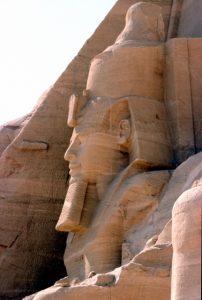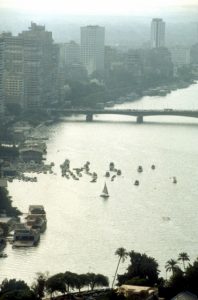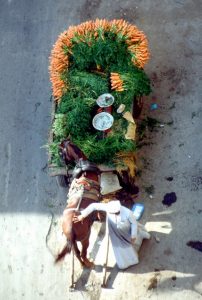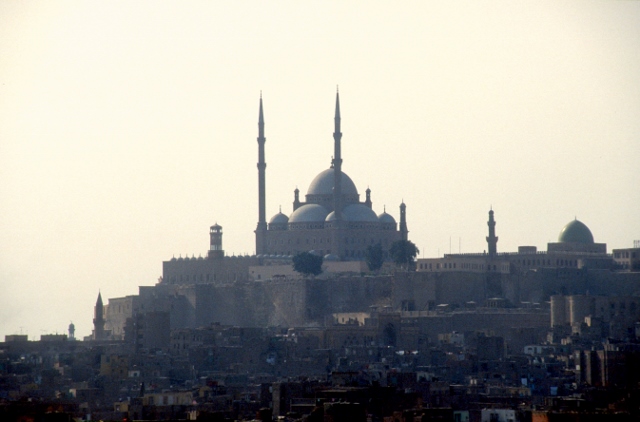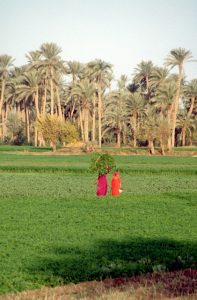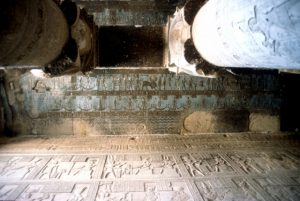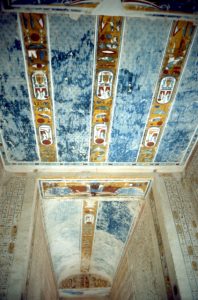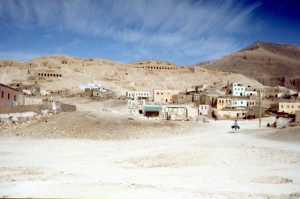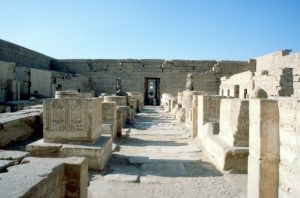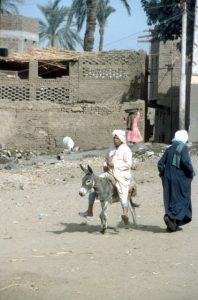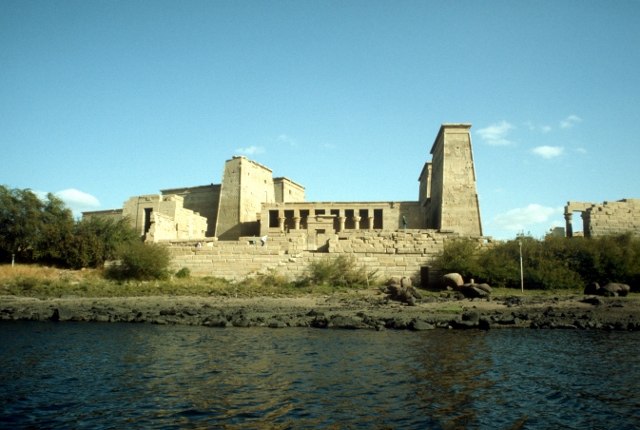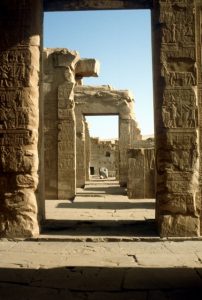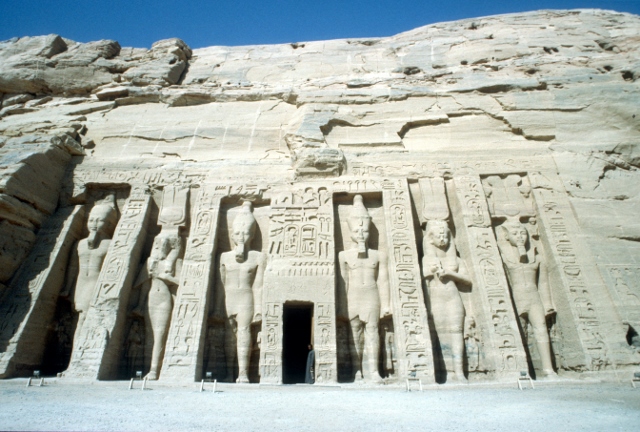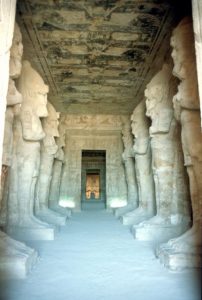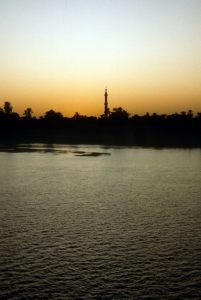Egypt is one of those places that have been a tourist destination for hundreds of years already, if not thousands (didn’t the Romans enjoy vacationing in Egypt?). So for the off-the-beaten track traveller, which is the focus of this website, perhaps not the first that comes to mind. But of course, there is a reason for that popularity; Egypt does have some fabulous attractions, after all. Which is why we went to Egypt ourselves, already quite some time ago, in the winter of 1992-1993.
We visited several friends in Cairo, first. Then we took a boat trip up the Nile to Luxor, a bus or the train (I cannot remember) to Aswan, and flew to Abu Simbel and back, before we travelled by night train back to Cairo. In the process, I took some pictures (slides, that I subsequently scanned – and yes, some are in mirror image, and yes, some have been discolored over time). Which is what is posted here, with minimal comments, because I have no notes, and – close to 30 years ago – not a lot of detailed memories left of the trip. In any case the archaeological sites are so well known that I don’t need to provide a lot of detail, and there are travel guides and other website galore.
Cairo
Cairo itself is a bustling place. Chaotic traffic – eye contact with the driver is essential before you cross the street as a pedestrian; the souk – where one trader approached me with the question “how can I get hold of your money today?”; several monumental mosques, and a fabulous museum – that is to say, fabulous collection but very poorly presented, full of dark corners filled with far too many objects. Just a few photos from how it was in those days.
more photos here
The Pyramids
No Cairo is complete without the Giza Pyramids, the three of them, built for Pharaoh Khufu (Cheops in Greek) – the biggest one with a height of 147 meters – and his son and grandson. I remember my first view of the pyramids, in the late afternoon, to be actually quite disappointing. Having seen so many pictures – ideal pictures of course, without tourists, and in the perfect light, they looked smaller than I had anticipated, and the enormous tourist industry around it was quite off-putting. We went back a few days later, when we actually climbed one of the smaller structures, all the way to the top. In those days….
Most visitors focus of the Pyramids of Cheops, but just outside Cairo there are more pyramids. One is in a place called Saqqara, the Djoser Pyramid, and is the oldest pyramid in Egypt, built in 2630 BC. This so-called step pyramid has some fabulous decorations inside. Another step pyramid is the Meidun Pyramid, one of the pyramids built for Pharaoh Snefru, also pre-dating the Pyramids at Giza. In the meantime, of course, local people keep working the fields along the fertile Nile.
more photos here
Luxor
Our Nile cruise did stop at several places before Luxor, but I have little remembrance, neither photos from this part of our journey, except for the enormous Temple of Dendera, just before Luxor.
Around Luxor itself I seem to have mostly pictures of the Karnak Temple of Amun, and the Hatshepsut Temple, although I also – vividly – recall slugging up the Valley of the Kings and across a mountain ridge to the Valley of the Queens, on what felt like a very hot summer day, in winter. We did get inside some of the tombs, most notably that one of Ramses IV in Thebes, in the Ramses III Yemple in Medinet Habu, and something poetically called the Ramesseum. And more temples and tombs, too many to remember.
more photographs here
Aswan & Abu Simbel
From Luxor we moved further up the Nile, by bus or by train – I don’t think the boat, our boat, went all the way. On the way to Aswan, the next main town, we stopped at the Temple of Khnum, in Esna, and the Temple of Horus in Edfu. No recollection, only some photos.
Aswan is Egypt’s southernmost town, at the foot of the large Nasser Lake, an artificial lake behind the Aswan Dam. Here, too, many sights, temples and tombs, but I can only find back pictures of the Temple of Isis in the Philea complex. Another popular activity here is touring the Nile in a felucca, a sailing boat based on ancient designs, and no better timing for this than late afternoon sunset trip, in those days complete with gin & tonics for sun downers, too – not sure whether the latter will work nowadays.
Although there is no town to speak of anymore, further south, close to the Sudan border, is the Temple of Abu Simbel, rescued from the bottom of the Nasser Lake in the 1960s – the temples were cut up in over 2000 huge blocks, and moved some 200 meters away from the water, to a specially built mountain where the whole complex was meticulously reconstructed. I think we had a flight up in the morning, the temple visit, and a flight back in the afternoon. But it was definitely worthwhile, and not in the least because of its recent history.
and more photographs here.
Back in Aswan, we took the night train to Cairo, from which I mostly remember the comfortable fauteuils, which could swivel 360o. And the stones that hit the train, occasionally, and the warnings not to sit too close to the window, you never knew. The first attacks on tourist had been carried out earlier that year, early signs of what was to come later in Egypt, and on and off paralysed further visiting of the incredible archaeology on display in this country.
Hopefully we get the chance to return to Egypt, in the nesr future, however un-adventurous that is these days. Would be great to spent more time, and take more – and better – photos, although I doubt it will ever be as deserted again as it was in 1992.










